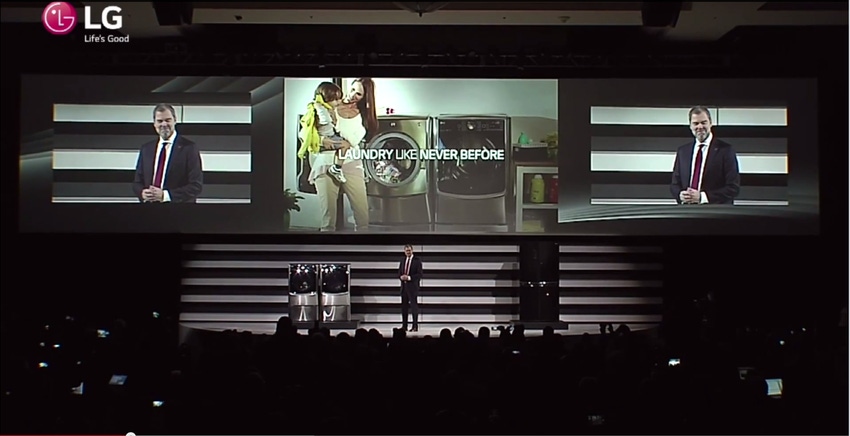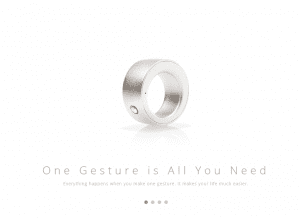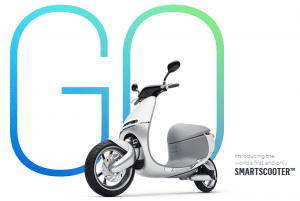At CES 2015 there has been a small whirlwind of activity and announcements about the mobile-powered technology. In the main, it’s been about wearables and the smart watch so far, but there’s also been some weird and wonderful conceptions giving us a glimpse of what might become reality in 2015.
January 6, 2015

At CES 2015 there has been a small whirlwind of activity and announcements around mobile-powered technology. In the main, it’s been about wearables and the smart watch so far, but there’s also been some weird and wonderful conceptions giving us a glimpse of what might become reality in 2015.
Chinese tech and phone manufacturer Lenovo kicked off its week with the announcement of its new VIBE smartphone, alongside the essential selfie flash accessory. But it was the VIBE Band VB10 which caught the eye.
Lenovo’S Vibe Band Vb10
Lenovo claims the Band VB10 will boast a battery life of 7-days, an impressive feature considering its always-on battery-chugging Bluetooth connectivity configuration. Visually, it will utilise an E-ink display to maintain visibility, and is also capable of displaying up to 150 characters, perfect for keeping up with imperative tweets on the go. Of course, the band will also maintain compatibility with SMS, Facebook, WeChat and so on. It’s quite pretty too.
Garmin also came out yesterday with its newest fitness band, the vívoactive, aimed at the professional-come-athlete who needs to keep connected. It will pair with the user’s smartphone through a proprietary app, and then gives the user a gentle nudge to keep active. Garmin called it the device that will help you “play harder”, “work smarter” and “live better”. Sony’s SmartBand and SmartBand Talk fitness-based device also came to market and got a seeing to at CES, and is now available for about £130 in the UK.
Moving from wrist-based devices to finger-based devices, Japanese start up Logbar nearly blew up Kickstarter last year by going straight through its $250,000 fundraising target, generating $880,998 from 5,161 backers. Known simply as “Ring”, the smart-thing can be hooked up to residential wifi or Bluetooth 4.0, and then users utilise gesture-based commands to control the home full of IoT things.

The Ring To Rule All Devices.
Pairing with the Ring Hub, users can turn lights on and off, change the music or take and print pictures, all with fully customisable gestures through the Ring’s app. Logbar also claims the Ring will boast up to three days continuous use time and up to 18 days standby time, with a charge time of just three hours.
Speaking of the Internet of Things, Belkin added a whole bunch of new sensors and devices to its WeMo range. The range essentially gives a new lease of life to old, dumb appliances and makes them wifi-enabled, and subsequently more automated or controllable through mobile interfaces. Belkin reckons that its new sensors will give users more at-home security by monitoring every inch of the building, from window and door frames, to smart-locks, motion and water-usage sensors. The new WeMo sensors will likely be available in the second half of 2015.
Panasonic has announced its new range of Life+ Screen 4K Ultra HD Smart TVs will be powered by Mozilla’s Firefox OS. On its blog, Mozilla said the OS will utilise HTML5 and Web tech to deliver a more personalised web-browsing and broadcasting experience to its users.
Yuki Kusumi, Director of the TV Business Division at Panasonic, is aiming for a less conventional approach to user experience with the new range, saying “Through Panasonic’s partnership with Mozilla, we will create further innovation with smart TV technologies and features, which will take consumers to a whole new level of interaction and connectivity inside and outside of the home.”
Meanwhile, there have been a couple of less ordinary devices announced which certainly sit in the Venn diagram of consumer electronics and telecoms.

The Gogoro Is Apparently The World’S First Smartscooter
Firstly, we have Gogoro, the cloud-enabled, connected, electric scooter. Inhabitants or frequent visitors of London will be familiar with the affectionately nicknamed “Boris Bikes”, a pay as you go bicycle targeted at commuters as a means of easing both congestion on the road and stress on public transport networks. The Gogoro is a fleet of electric scooters which are unlocked, enabled and personalised through the use of the companion smartphone application.
Every function of the scooter is monitored and maintained in real-time through cloud computing, with self-diagnosing capabilities should a fault occur. More jovially, users can use the companion app to personalise the colours or themes displayed on the scooter’s dashboard and front-facing fascia.
The project raised over $150 million in funding while in stealth mode, so a utopian future of everyone zipping around on funky coloured, eco-friendly scooters may not be so far away.
Finally, LG appears to be the first to stick its flag into a niche corner of the laundry market. In its press conference, the tech giant announced the wifi and NFC-enabled washing machine capable of simultaneously handling two separate loads. Think of it as an Inception-esque washing machine within a washing machine.
David VanderWaal, VP of Marketing at LG, said the washer will enable families to “divide and conquer” and save time through the use of its mobile app, which allows users to automate when cycles start, monitor its progress, check its energy consumption, and even text the washing machine to find out what’s going on. You can view the 12 minute keynote below.
More CES 2015 announcements to come as the week progresses.
About the Author(s)
You May Also Like








.png?width=300&auto=webp&quality=80&disable=upscale)


_1.jpg?width=300&auto=webp&quality=80&disable=upscale)


.png?width=800&auto=webp&quality=80&disable=upscale)